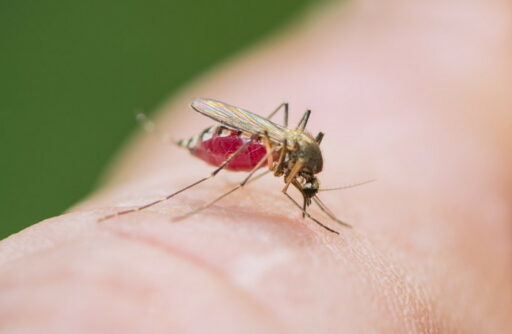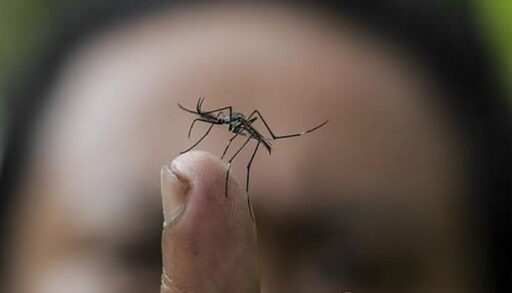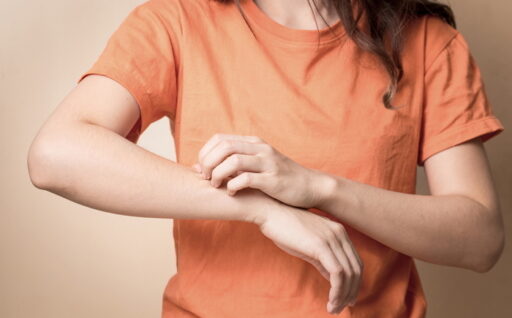Chikungunya fever, a viral disease transmitted by mosquitoes, is spreading globally.
In China, confirmed cases are nearing 5,000, and there has been one confirmed case in the Republic of Korea this year.

On the 29th, the Korea Disease Control and Prevention Agency held a meeting chaired by Director Lim Seung-kwan to review the response system in preparation for the potential influx of chikungunya fever, which is currently spreading in countries like China.
Chikungunya fever is classified as a class 3 infectious disease, contracted through bites from infected Aedes albopictus or Aedes aegypti mosquitoes.
This disease is characterized by symptoms that appear 1 to 12 days after an incubation period, including fever, joint pain, rash, and muscle pain.
Chikungunya fever was first identified in Tanzania in 1952, and its name derives from a Tanzanian word meaning "to bend," referring to the posture taken by infected individuals due to severe joint pain.
The difference between chikungunya fever and dengue fever

Chikungunya fever shares symptoms with dengue fever but has several important differences. Chikungunya fever tends to have a longer duration of symptoms compared to dengue fever.
Dengue fever shows a rapid tendency toward bleeding after symptom onset and can progress to severe cases, whereas chikungunya fever rarely progresses rapidly and has a relatively low mortality rate.
The case fatality rate is less than 1%, but so far, no definitive vaccine or treatment has been developed.
The virus enters the body when a mosquito feeds on a person and replicates for several days before accumulating in the salivary glands, where it can be transmitted when the mosquito bites another person.
Direct transmission between humans does not occur; however, transmission can occur through rare instances such as infected blood transfusions, vertical transmission between mother and child, or laboratory exposure.

In the Republic of Korea, since the first patient was identified in 2013, a total of 71 cases have been reported as of the 25th, all of which were cases brought into the country after being infected abroad. This year, one case was reported in July.
From 2013 to the present, the estimated countries of infection for the 71 reported domestic cases include Thailand (19 cases), India (12 cases), Indonesia (9 cases), Myanmar and the Philippines (7 cases each), Laos (4 cases), and Vietnam (3 cases).
Current Status of Mosquitoes in the Republic of Korea and Global Spread Situation
According to the Korea Disease Control and Prevention Agency, Aedes albopictus does not reside in the Republic of Korea, but Aedes aegypti is found throughout the country, with no cases of the virus found so far.
As of June this year, 636 Aedes aegypti mosquitoes were collected and tested for the virus, with all results returning negative.

Globally, as of early last month, about 220,000 chikungunya infections had been reported in 14 countries, with 80 fatalities.
Many cases have arisen in South American countries such as Brazil and Argentina, and recently, cases have been increasing in French territories in the Indian Ocean, including Réunion, Mayotte, and Mauritius.
In Asia, instances are primarily occurring in India, Sri Lanka, and Pakistan, with 2,940 new cases reported in Guangdong Province, China, alone during the week from the 20th to the 26th.
Cumulative infections in Guangdong Province have reached 4,824; however, the Guangdong Center for Disease Control and Prevention stated that among the confirmed cases, none have been severe or led to death, and all cases are mild. Additionally, from the 27th onwards, efforts are underway to control mosquito breeding by releasing 5,000 fish that eat mosquito larvae into ponds and streams.

A spokesperson from the Korea Disease Control and Prevention Agency stated, "Direct transmission between humans does not occur, like with respiratory infectious diseases such as COVID-19. Most patients recover from symptoms, but neurological complications can occur in areas such as the eyes or heart, so those with underlying health conditions and the elderly need to be cautious." They also added, "Due to recent climate changes, the habitats of vector mosquitoes have moved, creating a situation where exposure to the disease is possible," noting that if it were to enter the country, limited transmission could be possible, and vigilance cannot be entirely relaxed.
To prepare for the potential influx of chikungunya fever, the Korea Disease Control and Prevention Agency plans to add regions such as Guangdong Province in China, Indonesia, and the Philippines to the quarantine management areas and conduct intensified monitoring for incoming travelers. Furthermore, they urge citizens planning to travel abroad during the vacation season to check the infectious disease occurrence status and precautions for the respective countries and to prepare mosquito repellents, mosquito nets, and light-colored long clothing.
While traveling, it is advised to apply mosquito repellent every 3 to 4 hours and wear light-colored long clothing to avoid mosquito bites.
Image source: Reference photos to aid understanding of the article / gettyimagesbank


![[Breaking News] Osong Disaster Advisory Team Leader Dies After Attempting Extreme Choice and Undergoing Treatment](https://wordkorean.com/wp-content/uploads/2025/07/thumbnail-1012.webp)